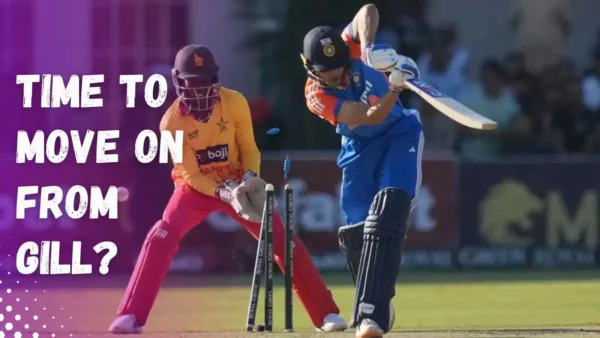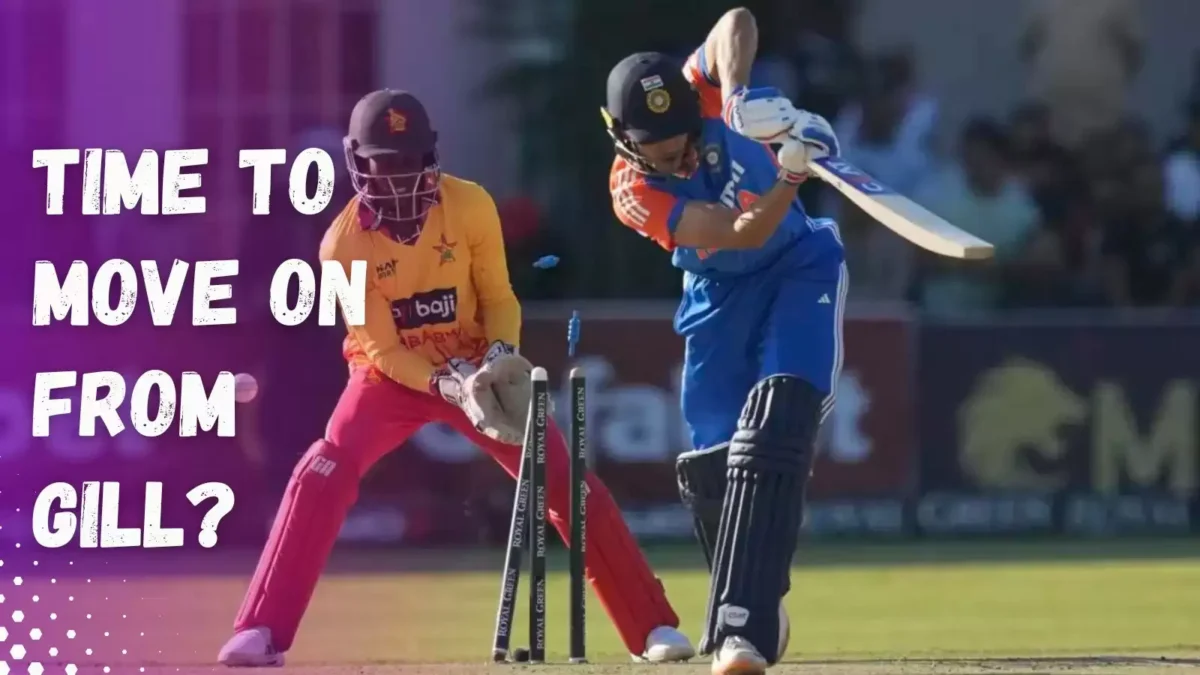
You know when the player is Shubman Gill, there’s quality, talent and a mix of everything.

Stats-wise, Shubman Gill ended as the highest run-scorer in the Zimbabwe series, accumulating 170 runs at an average of 42.50 with two fifties. But these are raw numbers, which don’t paint a clear picture. It’s a 125.92 strike rate that doesn’t look exciting when the other top 7 Indian batters scored 147.94 in the five-match series.
You know when the player is Shubman Gill, there’s quality, talent and a mix of everything. He is so compact for a 24-year-old that you are sure of him succeeding in every format, expecting immediate results. But cricket doesn’t work that way.
It’s palpable Gill has had a tough going in the shortest format so far in his international career so much so that 24.95% of his T20I runs have come in a solitary innings – his century against New Zealand in Ahmedabad last year. Apart from that, his numbers are tepid, even if he also has three half-centuries. One would have expected Gill to take this Zimbabwe series by storm; he scored, but not how you’d anticipate.
Gill and KL Rahul are identical in their modus operandi in this format. Both have immense talent and still, they frustrate you with their stubborn approach. Gill has this habit of not exploding unless hitting is the only option left, a method India forsook a long way back as a unit.
India’s new-found approach didn’t align with KL’s gameplay, leading to his omission. Maybe Gill should have sealed his spot in T20Is, but Yashasvi Jaiswal fitted perfectly to India’s plans and went ahead in the pecking order. Both had a terrific IPL 2023, but only one could replicate the same, or even better, in blue colours and rightly stamped his place.
Gill has a strike rate of 119 in powerplay since 2023, averaging 18.30 in 19 T20Is. He has been dismissed 68.42% of the time inside the first six overs, showing he wastes balls and often fails to cover them. That average was unacceptable even if he struck at 140; at 119, he plays negative knocks and piles pressure on his partners concurrently.
In comparison, Yashasvi averages 35.08 and strikes at 163.81 during the field restrictions. If that’s the way Gill approaches, India have a better run-accumulator in Ruturaj Gaikwad, who at least preserves his wicket and accelerates adeptly to cover up for the slow start. In Gaikwad, India at least get a high-class anchor who binds the innings together in all the conditions, even though such batters are no longer in fashion.
Also Read: Should India try Ruturaj Gaikwad in the middle order?
Like Rahul, Gill also thinks he has the responsibility of doing heavy lifting when it is not the case at all. No one needs to do the heavy lifting in the T20 format; specialists for each role are available, at least in the national side. India’s spotless T20 World Cup 2024 campaign showed if the right players are chosen for the right roles, things will fall into place automatically.
It’s not that Gill faced so many arduous situations where he had to drop his approach and play casually. Even if that was the case, his numbers should have been better. Even Virat Kohli, the quintessential T20 anchor, had to alter his method to the team’s requirements.
For some reason, Gill hasn’t found an ideal tempo to operate in T20s, and it’s not a skill issue. It’s unfortunate and frustrating at the same time that he is not a certain opener even after the retirements of Virat Kohli and Rohit Sharma. This Zimbabwe series could have been better for Gill in numerous ways.
Who’s a better T20I batsman according to you?#IndianCricket pic.twitter.com/RE15Je76zB
— CricXtasy (@CricXtasy) July 16, 2024
Who’s a better T20I batsman according to you?#IndianCricket pic.twitter.com/RE15Je76zB
— CricXtasy (@CricXtasy) July 16, 2024
When he scored, Gill looked world-class. You could gauge his skillsets with his way of countering Zimbabwe pacers during the first T20I when all others around him looked listless. But then, he didn’t really blow away the opposition at any stage, as one would expect from him.
The competition at the top is immense. The likes of Abhishek Sharma, Yashasvi Jaiswal, and Ruturaj Gaikwad are more dynamic than Gill based on current returns. Someone like Ishan Kishan can also come into the fray on the back of strong domestic performances.
Gill won’t get too many chances to make mistakes. Sure, he is talented and shouldn’t be overlooked as early, but the ones in the same race have hardly put a foot wrong. Sometimes, too much talent brings high expectations, and India have towering aspirations from Gill.
Also Read: Can Shreyas Iyer regain his place in the Indian side with Gautam Gambhir at the helm?
Once, the team expected the same from KL Rahul, but things didn’t go as planned with him. The patience level of the management eventually ended, and they parted ways with him. Maybe it’s too soon to predict the same for Gill, but the time will run out at some stage.
Despite being immensely talented, Gill also took a fair share of time to crack Tests when he was expected to do it quickly. He was fortunate the Test team didn’t have too many options, leading the side to experiment with him at various positions. But that is a different format, and Gill deserved a longer rope since his skillsets are well-documented, and big names were just looked past.
T20Is won’t be as lenient. Given the quality in the reserves, he won’t get as many chances as in Tests. That pool will expand more and more in the coming days, with more domestic and IPL exposure to young and dynamic players.
Maybe Gill is too talented not to crack T20Is. But the same was said for KL Rahul at one stage. Hopefully, Gill’s graph won’t follow the same pattern, or another talent will go in vain for India.
India will play ample T20Is before the next mega event. So, everyone will get a chance at some stage. Given that Yashasvi Jaiswal’s position is almost certain, it will be now or never for Gill soon.
For more updates, follow CricXtasy on Facebook, Instagram, Twitter, Telegram and YouTube.